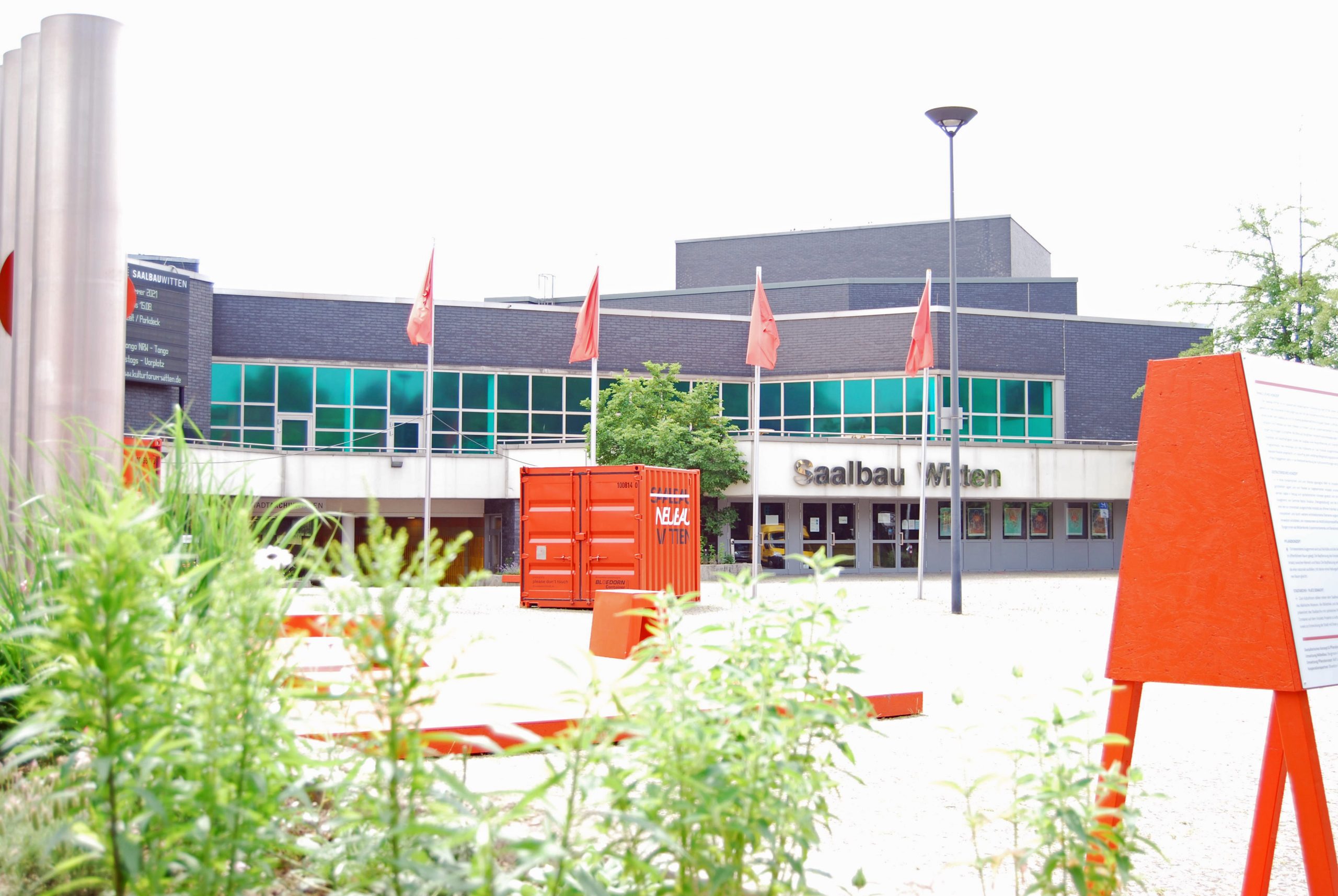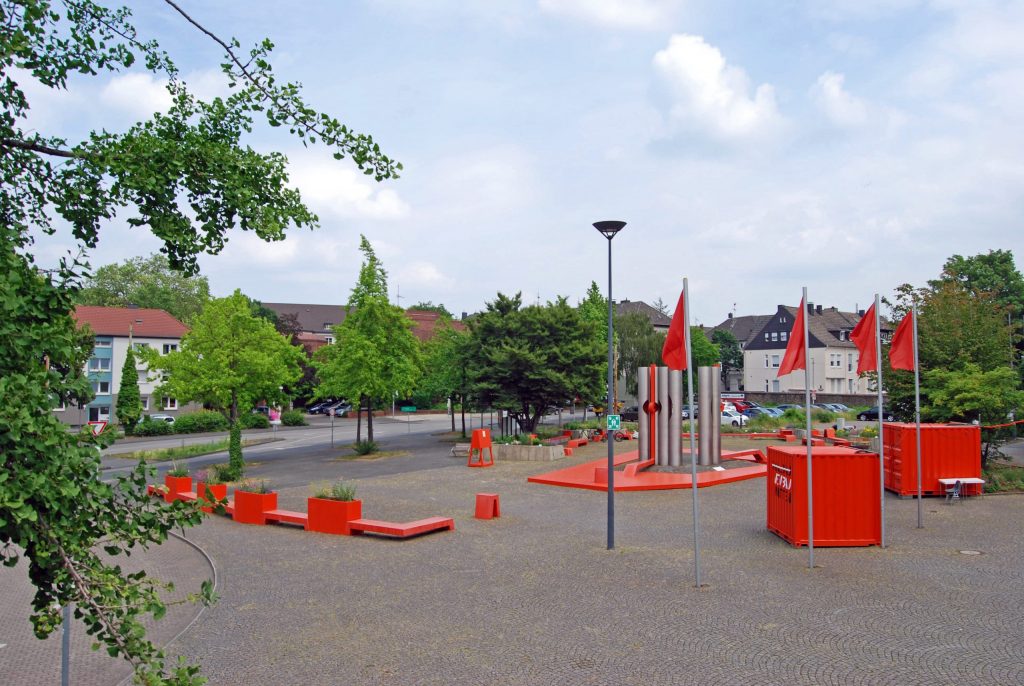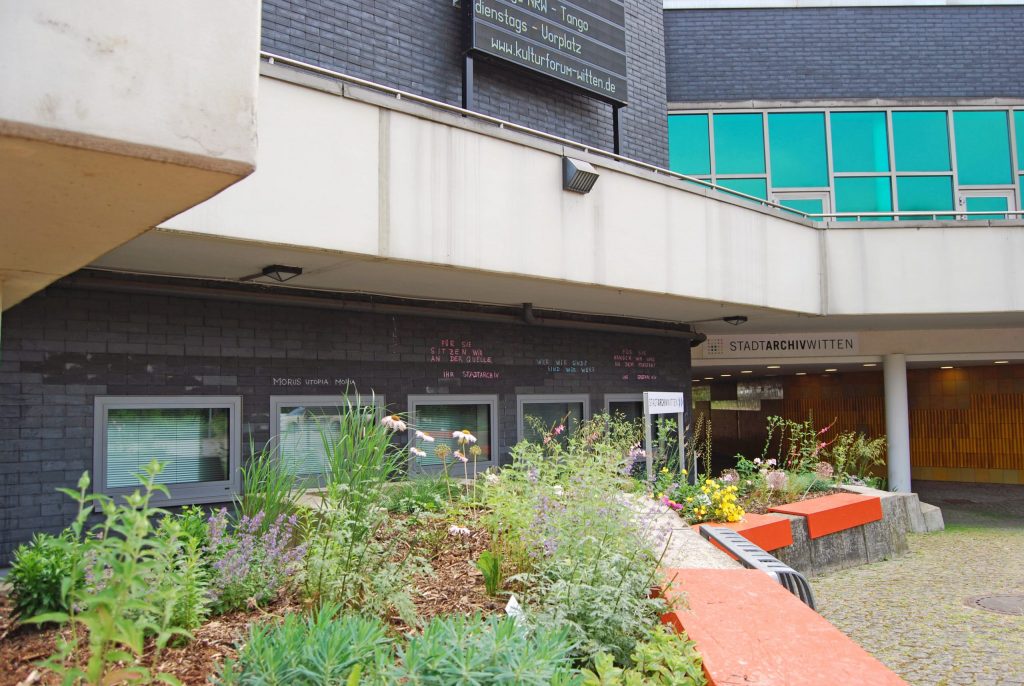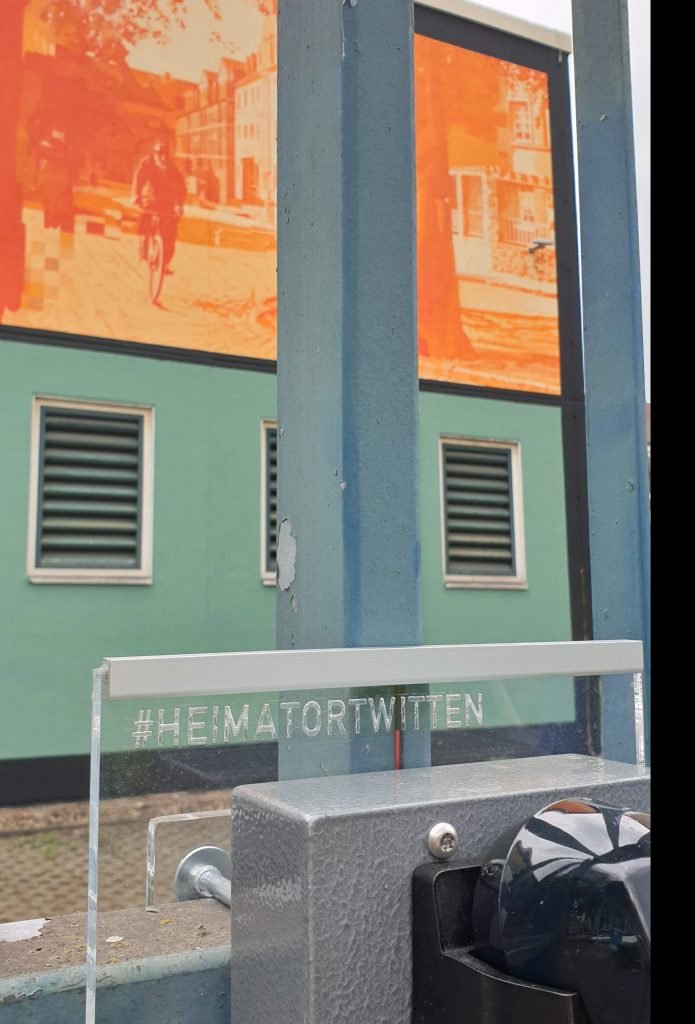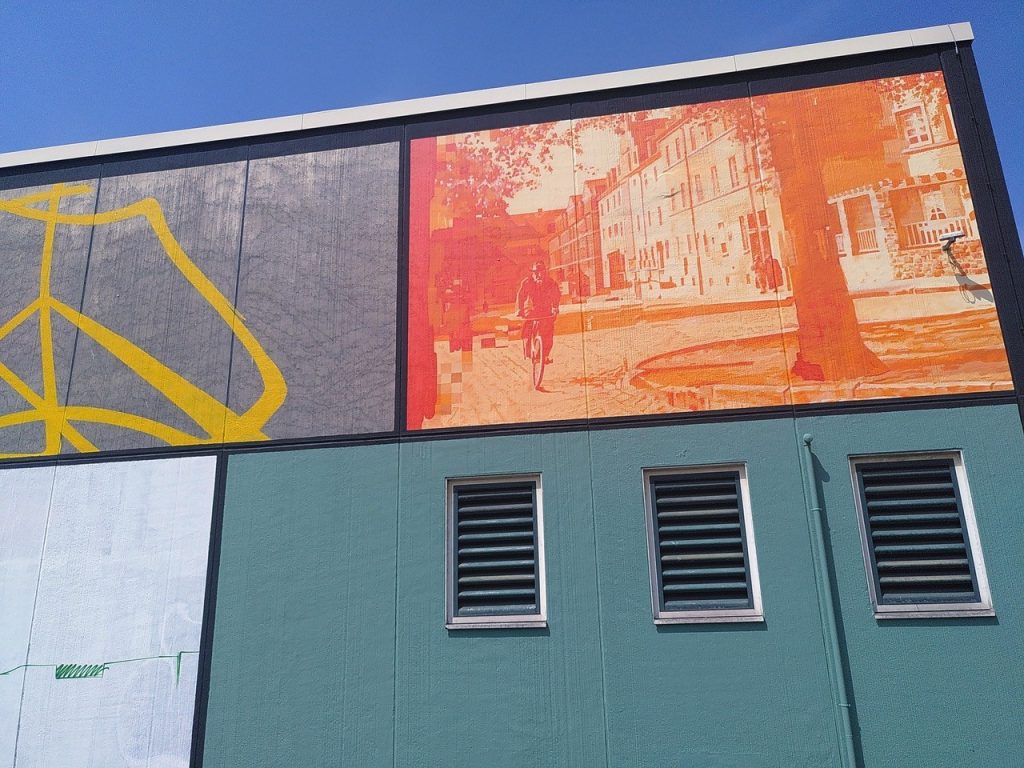Witten has been busy tinkering with and rethinking some cultural matters for several months now. The urban space is sending out some initial signals here and there. That’s what I have gathered, in any case. Now, standing right on the Saalbau square, I can even spot them, shining brightly! Saalbau Witten is one of those classic big, grey, and practical venues of the 1970s as they are sported by many a medium-sized German town. They were built based on the idea of creating space for everyone and everything.
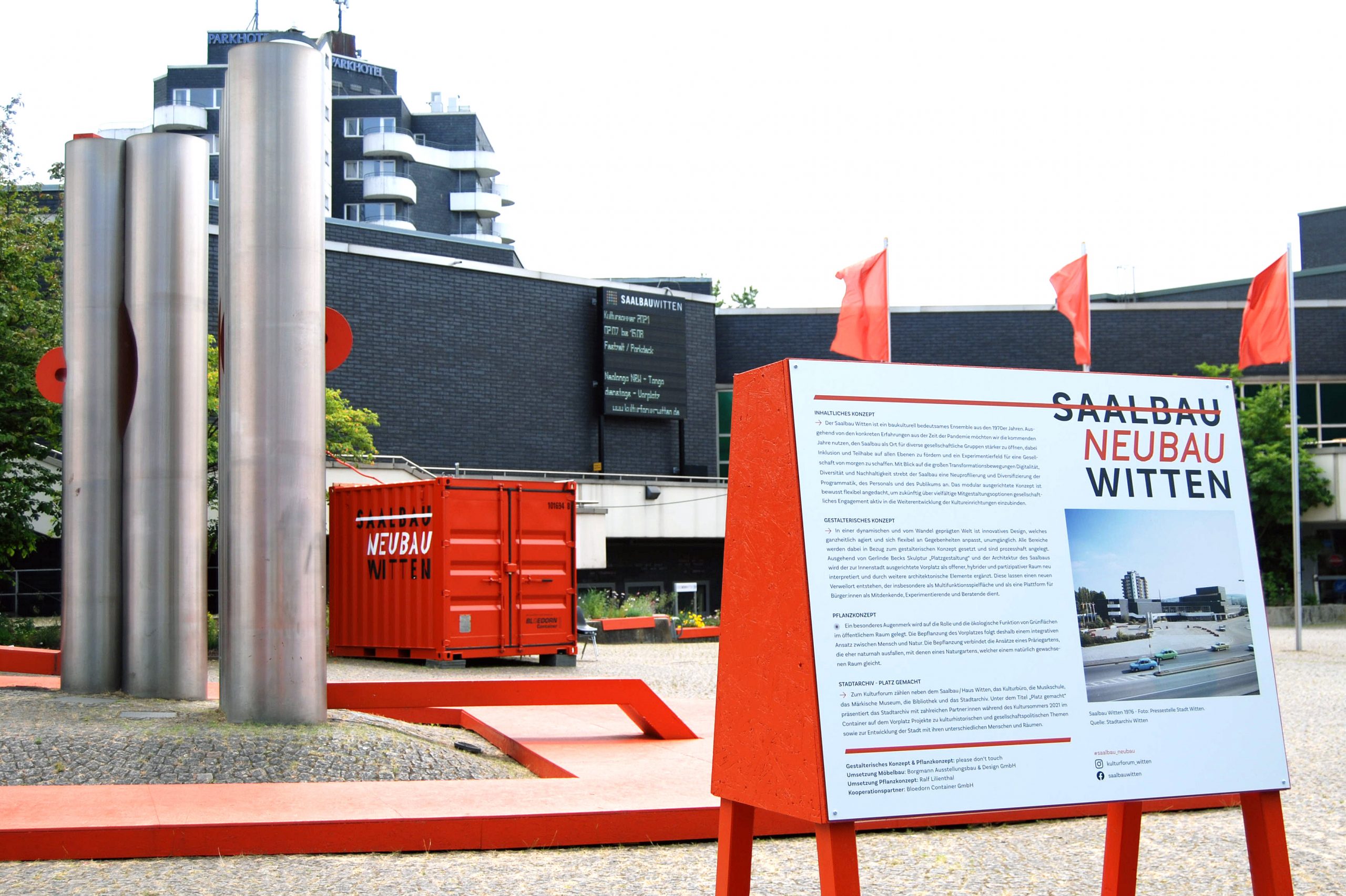
from Saalbau to Neubau
The orange containers, flanked by many equally signal-coloured seats and waving flags matching in hue, redefine the huge forecourt. A stage serves as another highlight at its centre, surrounding the “Platzgestaltung” sculpture by Gerlinde Beck from 1975: “The stage is used as a venue for our summer programme,” Alissa Krusch, recently responsible for the digital transformation of culture in Witten, tells me as she strolls through the city with me. “There’s also a tango group that contacted us and is now rehearsing there regularly. That brought our hopes for the place to fruition. We don’t take the power to decide what is offered in the cultural sphere. It’s the people of Witten who make the decisions here, and new things are created this way.” Saalbau—Neubau (new building). The name is the game here.
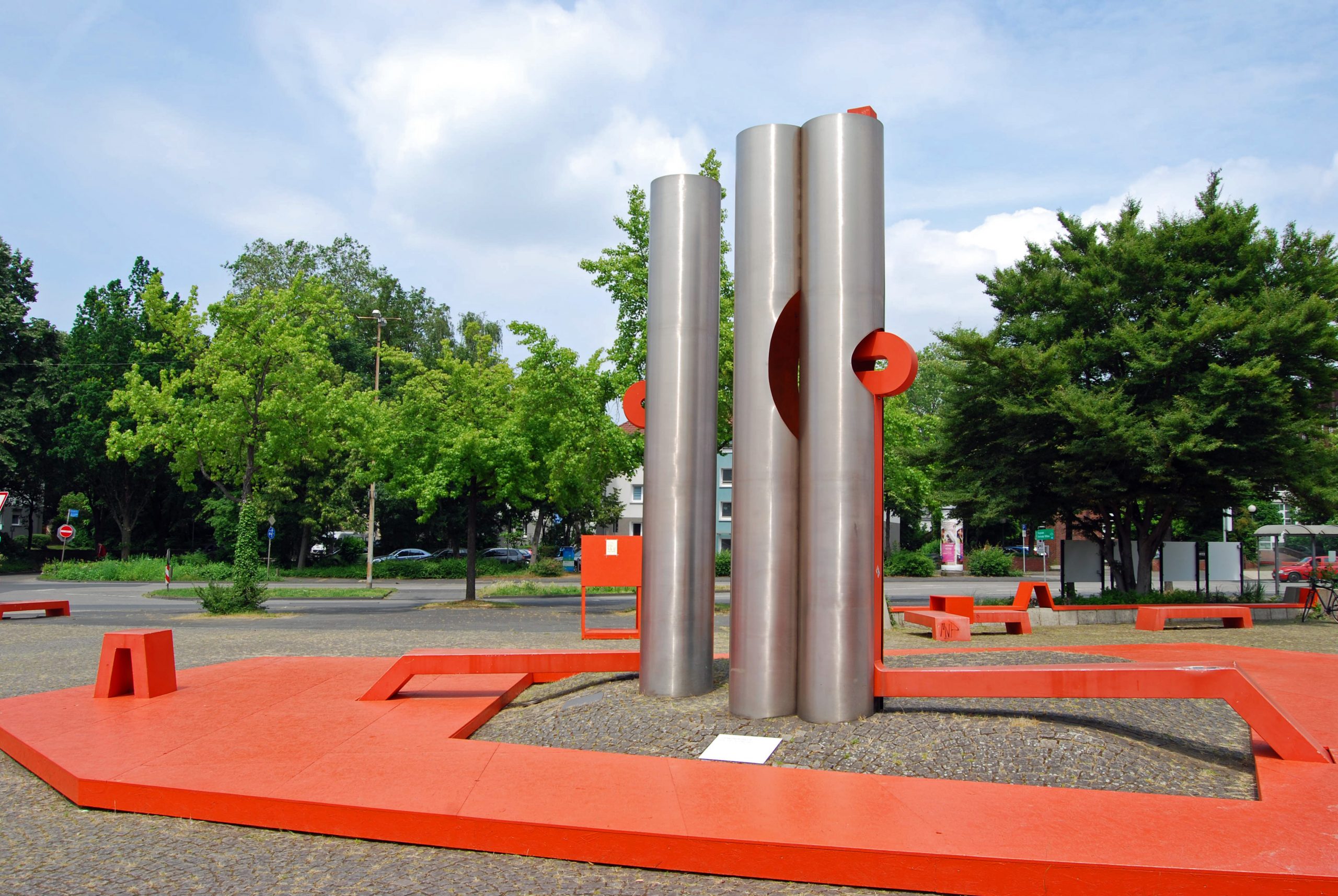
”The cultural sector continues to be a closed shop, characterised by hierarchies and a fear of making mistakes. We need to change the system with its problematic structure.
Jasmin VogelKulturforum Witten
daring to fail
Jasmin Vogel brought this change of attitude to Witten when she was made the new executive director of the city’s cultural forum, responsible for managing the library, Märkisches Museum, city archive, cultural office, as well as the Saalbau and Haus Witten, in October 2019. “Witten, with its institutions, represents the archetype of a central German city. I was interested in effectively changing things concerning culture here in order to produce an effect on a vivid urban society from the outset,” the woman from Bochum, who has been working in the cultural sector for a decade and takes a critical view of it, says: “We need to challenge ourselves. The cultural sector has been talking about participation rather than practicing it for 30 years. It continues to be a closed shop, characterised by hierarchies and a fear of making mistakes. We need to change the system with its problematic structure. We can only do that by experimenting, by being open to mistakes, by having the courage to try out new approaches, by daring to fail, by opening up contexts and relinquishing power and interpretive authority. By admitting different perspectives we will change content. We need to learn to handle that as well.”
"please don't touch"
I can see the first fruits borne of this idea today, at the centre of the most frequented and crossed city square, outside one of the most prominent sites in Witten. Culture comes to the people and reaches out to them in front of the Saalbau building. It plants its tender little sprouts and sets colourful signs. The designers of “please don’t touch” have brought their concept of a high-quality stay to the transit square, turning it into a site of co-production, creating a stage for anything imaginable, and set up a nature garden that serves (served) (digital) workshops on the construction and cultivation of raised beds while also looking pretty. The city archives use the construction containers to present their projects on cultural-historical and socio-political subjects and, as a matter of course, the development of the city with its many different kinds of people and spaces.
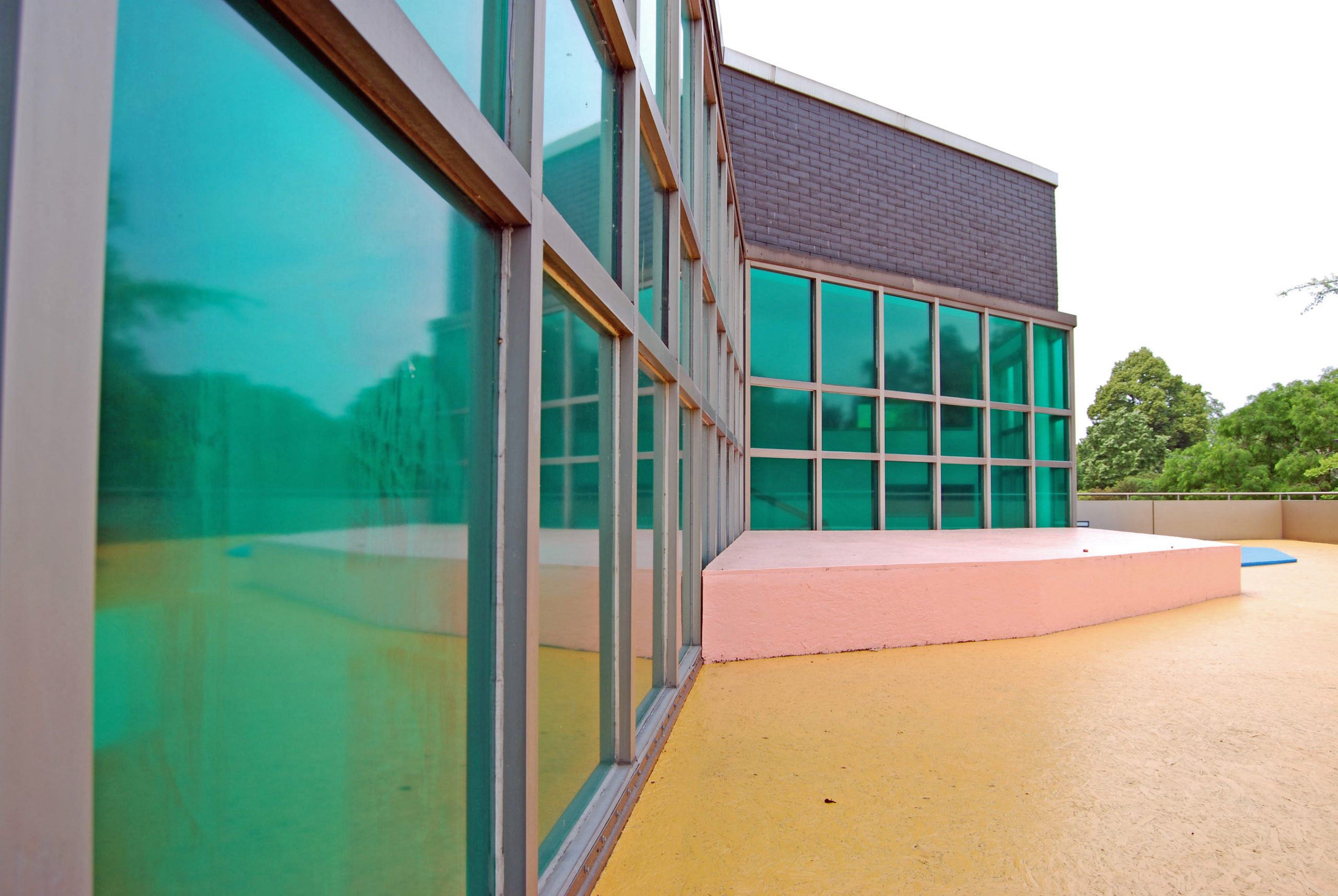
plateau and dance
A change of perspective: The Saalbau terrace affords a view not only of the entire forecourt ensemble, but also of Frauke Dannert’s work “Plateau” that repeats the polygonal and multi-tiered Saalbau architecture, extending the interior to the outside and making it accessible to everyone in another stage for new ideas looking for a public venue. Dancer Yurika Yamamoto already made it her own last year).
“We’re also creating space in the parking lot behind the Saalbau; in fact, we’re creating an entire tent landscape there,” Alissa Krusch discloses. “We have talked to many representatives of the independent scene in Witten about what they need for our Kultursommer, seized places, and cleared them to prepare for their programmatic reinterpretation. By the way, we also use our Instagram channel in this collaborative form.” Witten is changing visibly and tangibly on the outside, but first and foremost in the background, in how it approaches cultural work. This “structural alignment with change” has quickly made Kulturforum the first winner of the Commerzbank Foundation’s ZukunftsGut award last year, among other things and in particular because Witten has cast the digital world in a leading role. It isn’t just something kind of happening on the fringes. Digital transformation is included in every step as a central theme and, in particular, as a method for opening up cultural work. That’s exactly what Alissa Krusch’s full time position – which may come as a surprise – was created for.
“At times, I feel like a little drone flying through Witten, watching, making connections, providing impulses, or even jumping in quickly to help out a bit here and there. The change towards greater digitality is happening in imagination and in action at the same time. Many find it difficult to transfer this into specific projects. I find it exciting to be there to ‘translate’. It’s great to see our approach work. A few days ago, we heard that a grant will soon enable us to implement our digital lab in the Saalbau to build a new place for content production and creation of new formats. We definitely expect more from it than just the same old livestreams where one person narrates while everyone else listens!”
#heimatortwitten
The gigantic graffiti art on the façade of the Telekom distribution building on Humboldtplatz in Witten’s liveliest district, the Wiesenviertel, is yet another product of this participatory approach. It tells the home stories of many Witten residents the project team talked to together with the Storylab Kiu of the FH Dortmund. These conversations inspired artist Choko’s spray art. There’s plenty of orange here, too. A few weeks ago, sound was added to the colour. Taking one of the three handsets from their cradles will teach the user more about what makes #heimatortwitten so very special for the interviewees and what it sounds like.
“We aren’t even trying to act as a lighthouse. We already have plenty enough of those immobile ones in the cultural sector,” says Jasmin Vogel. Somehow, however, I feel that Witten is at least sending its light out to everyone who is truly receptive to participatory cultural work and wishes to change production techniques and structures in culture, not least with the involvement of digital means and methods. Of course, this may be subject to mistakes, failure, repetition and trying different approaches the next time. I like that a lot.
photos & text: Britta Rübsam


